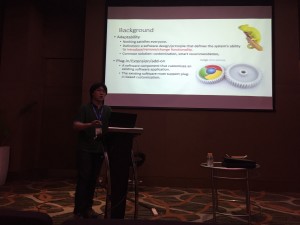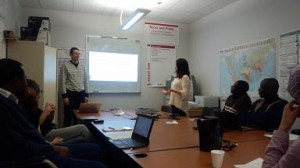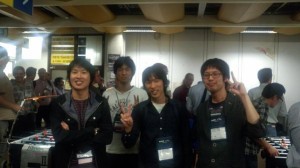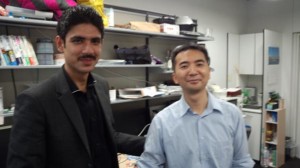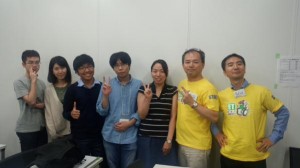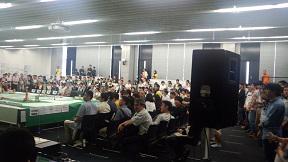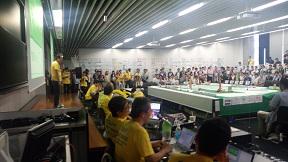In below, I review the last year’s resolution. Moreover I describe New Year’s Resolution regarding Group Organization, Research Achievements, and Event and Community Contribution.
*Group Organization*
2015: We had several new international students from China, Indonesia and Afghanistan in 2015.
2016: Like last year, we expect some new students coming from several countries. Our group is growing and having more diversity in national origins, backgrounds and mindsets. Such diversity contributes to our group in various aspects such as creativity.
*Research Achievement*
2015: We published and presented 4 journal papers (1 international and 3 domestic), 22 international conference and workshop papers (3 at CORE Rank A conferences, 10 at Rank B, 2 at Rank C, and 7 at conferences without CORE Rank), 3 international conference posters, 1 book co-authored, 1 book chapter, 2 magazine articles and 1 book translation. In addition, 1 international journal paper and 2 international conference papers (1 at CORE Rank A, 1 at Rank B) have been already accepted to be published in 2016. These achievements are results of researches supported by the university’s grain-in-aids, 7+ companies and 3+ public grants including JSPS KAKENHI, IISF/SSR, and IPA RISE. Moreover, we got new international research connections with Fraunhofer IESE and École Polytechnique de Montréal through GQM+Strategies seminars and my sabbatical stay in Montreal.
On 1st Jan 2015, I stated that we hoped to publish 7 journal papers (incl. 3+ international) and 20 international conference and workshop papers (2+ at CORE Rank A and 10+ at Rank B). Although we got less paper acceptances at journals than expected, we successfully achieved the goal of number of international conference and workshop papers. Moreover, currently there are 4 journal submissions under review including 2 as minor revisions so that I say we did mostly well about research! Of course we believe we can do better and more.
2016: Having the same clear vision “establishing software development practices based on solid engineering theory”, we will push forward with research on novel and actionable software engineering methods and tools based on well-defined and validated theory to contribute to software engineering industry and academia in collaboration with 10+ local and global partners. We aim to publish impactful papers at better places: at least 7 journal papers (incl. 3+international) and 20 international conference papers (3+ at CORE Rank A/A* and 10+ at Rank B). Many of our research achievements in the form of methods, practices and tools shall be continuously used and produce actual values through our local and global partners.
*Community and Professional Contribution*
2015: Thanks to many collaborators and supporters, we contributed to several major programming and engineering contests: ET Robocon 2015 Tokyo Regional Contest, IPSJ SamurAI Coding 2014-15 and 2015-16. We organized and/or hosted various conferences and meetings including AsianPLoP 2015, XP-Matsuri 2015, Minecraft x Education 2015, Waseda Fraunhofer IESE Joint Seminars (on Feb and Sep), and JSSST National Convention 2015. Moreover, I was newly selected as ISO/IEC/JTC1/SC7/WG20 Convenor and IEEE Computer Society Japan Chapter Chair in 2015. Our activities on Minecraft x Education and IPA RISE Research on Software Quality Measurements have been widely reported in the media including TV programs and Web articles.
2016: We continue to contribute to IPSJ SamurAI Coding 2015-16. Moreover we will host and/or organize various conferences and meetings including AsianPLoP 2016 on Feb 24-26, Minecraft x Education 2016 on Aug and ET Robocon 2016 Tokyo Regional Contest on Aug-Oct. These event and community organizations give us good opportunities to publicize our research achievements and contribute to the outer world and expand our network. Moreover I continue to serve as ISO/IEC/JTC1/SC7/WG20 Convenor, IEEE Computer Society Japan Chapter Chair and SEMAT Japan Chapter Chair to lead the professional society and standardization in computer science and software engineering.
Hironori Washizaki
Head of Global Software Engineering Laboratory, Waseda University


